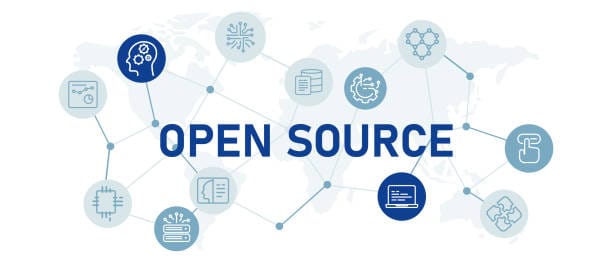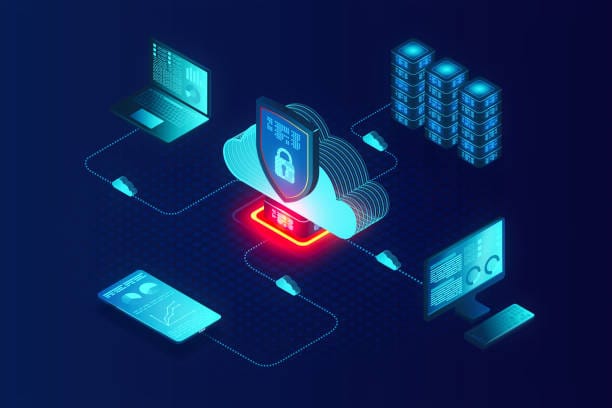In the early years of computing, the idea of software as something you own was foreign. In the 1960s and 1970s, software was often bundled freely with the hardware — not because companies were generous, but because the real profit was in selling machines. By the 1980s, that changed. Software became a product in its own right, wrapped in licenses, copyright notices, and legal agreements that declared: you may use this, but you do not own it. This marked the beginning of the proprietary software era — and the start of a quiet rebellion that would blossom into the open-source movement.
Today, that old struggle is as relevant as ever. Whether you’re an entrepreneur choosing the backbone of your business, a government deciding on infrastructure, a student learning to code, or a casual user deciding between Microsoft Office and LibreOffice, you’re participating in this decades-long debate. Open-source software and proprietary software represent two vastly different philosophies, business models, and communities. Understanding the difference is not just about comparing features — it’s about understanding the economic, social, and cultural forces that shape technology.
A Tale of Two Philosophies
At its heart, the distinction between open-source and proprietary software is philosophical. Proprietary software, by design, restricts access to its source code — the human-readable instructions that make it run. Only the company or individuals who own it can legally modify, share, or even fully understand how it works. This model protects intellectual property and often fuels commercial profit.
Open-source software, on the other hand, is built on transparency. The source code is freely available to anyone who wants to see, modify, or redistribute it, usually under licenses that explicitly allow such activities. This model encourages collaboration, innovation, and community-driven development.
The philosophies are not purely idealistic. They shape how software evolves, how quickly bugs are fixed, how secure it becomes, how affordable it is, and even how long it survives once its creators move on.
The Power of Collaboration and Community
One of the most celebrated benefits of open-source software is the role of its community. When anyone can contribute to a project, the potential talent pool is vast. Developers from all over the globe — some working for companies, others as volunteers in their free time — can submit code improvements, fix bugs, or add new features.
Consider the example of the Linux kernel, the core of many operating systems, including Android and countless server environments. Thousands of developers from hundreds of companies contribute to its growth, guided by maintainers who review submissions. This collaborative approach means that innovation doesn’t hinge on the budget or direction of a single corporation. If a group of users wants a feature, they can build it themselves and offer it to the community.
In proprietary software, innovation is driven almost exclusively by the owning company’s priorities. That company decides what features to develop, when to release updates, and how to handle bugs. While such control can lead to polished, consistent products, it can also mean that user needs are overlooked if they don’t align with business goals.
Security Through Transparency
Security is one of the most debated aspects of the open-source vs. proprietary discussion. Critics of open source argue that by exposing the source code to everyone, you also give hackers a blueprint for finding vulnerabilities. Advocates counter that transparency is precisely what makes open-source software more secure in the long run.
In open-source projects, security flaws can be spotted and patched by anyone. There’s no need to wait for a single company’s internal team to act. This “many eyes” principle means vulnerabilities are often discovered faster, and fixes can be deployed without waiting for an official release cycle. The open-source encryption tool OpenSSL, despite facing a notable vulnerability in 2014 known as Heartbleed, serves as a testament to how quickly a community can mobilize to address critical issues.
In proprietary software, vulnerabilities are often kept secret until a patch is ready, which can lead to periods where users are unknowingly exposed. The company holds complete control over how much they disclose, when they disclose it, and whether older versions of the product will receive fixes at all.
Freedom from Vendor Lock-In
Imagine you’ve built your entire company’s workflow around a single proprietary platform. The vendor decides to raise prices, change the licensing terms, or discontinue support for the product. Suddenly, you’re faced with expensive upgrades, migration challenges, or even total business disruption. This is vendor lock-in — and it’s a risk baked into proprietary models.
Open-source software reduces this risk. Because the code is open, you’re never entirely dependent on one vendor. If a company maintaining the software closes its doors or shifts focus, another group can fork the code — creating an independent version — and keep it alive. This freedom doesn’t just protect users from unexpected changes; it empowers them to adapt the software to their evolving needs without waiting for corporate approval.
Cost and Accessibility
The financial aspect is one of the most visible benefits of open-source software. Many open-source projects are free to download and use. Even those that come with paid support or enterprise versions are often more cost-effective than their proprietary counterparts. This makes open-source solutions especially appealing for startups, educational institutions, and organizations in developing countries.
Proprietary software, in contrast, often requires licensing fees, subscription costs, or per-user charges. While these costs can fund dedicated development teams, marketing, and customer support, they also create barriers for smaller players. The result is an uneven playing field where access to powerful tools depends heavily on budget.
Innovation Without Boundaries
In the proprietary world, innovation is often tied to market incentives. If a feature won’t generate profit, it may never see the light of day — even if it could transform the user experience. In open source, the motivation for innovation is often personal or communal. A developer might build a feature simply because it excites them, because they need it for their own work, or because the community has been clamoring for it.
This has led to open-source projects being at the forefront of some of the most groundbreaking technological shifts. The Apache web server, MySQL database, and Kubernetes container orchestration platform are just a few examples of open-source technologies that have defined entire industries.
Proprietary companies sometimes adopt open-source projects themselves, either by contributing to them or by building commercial services around them. This hybrid model shows that even in a competitive market, open source can be a driver of change for everyone.
The Human Side of Software
It’s easy to forget that behind every program, there are human beings — designers, developers, testers, and users. Open-source communities often foster strong interpersonal connections. Contributors collaborate across continents, share knowledge freely, and mentor newcomers. This global camaraderie can be deeply rewarding, giving individuals a sense of belonging and purpose.
Proprietary software teams, while often well-compensated and highly skilled, usually operate within corporate silos. Collaboration is internal, and external contributions are rare or nonexistent. The relationship between the company and its users can feel transactional rather than collaborative.
Longevity and Legacy
When a proprietary software company discontinues a product, it can vanish overnight. Users are left scrambling for alternatives, and valuable digital history is lost. Open-source software, by contrast, can live indefinitely. Even if the original maintainers step away, others can pick up where they left off.
Some open-source projects have thrived for decades, evolving alongside the needs of their users. The GNU Project, started in 1983, remains active today, providing the tools and philosophy that underpin much of the open-source world. Proprietary products rarely enjoy such resilience unless their owning companies maintain long-term commitment.
A World Shaped by Both Models
While it’s tempting to declare one model “better” than the other, the reality is more nuanced. Proprietary software can offer polish, specialized support, and integration that’s harder to achieve in a purely open-source environment. Open-source software delivers freedom, adaptability, and a spirit of shared innovation that proprietary models often can’t match.
In many cases, the two coexist. Microsoft, once seen as the arch-nemesis of open source, now contributes heavily to open-source projects, hosts them on GitHub, and even offers its own open-source tools. Meanwhile, open-source companies often provide proprietary add-ons or services to sustain their business.
The Future of Software Freedom
As technology becomes more deeply embedded in every aspect of our lives, from healthcare to education to governance, the stakes in the open-source vs. proprietary debate grow higher. Open-source advocates argue that transparency and collaboration are essential to ensuring that software serves the public interest. Proprietary defenders maintain that commercial incentives drive the kind of focused, high-quality development that users demand.
The most likely future is one of hybrid ecosystems, where open-source and proprietary elements intertwine. But the principles of open source — freedom, transparency, and community — will remain a crucial counterbalance to the consolidation of power in the tech industry.
Conclusion: Choosing the Path Forward
Choosing between open-source and proprietary software is not just a technical decision. It’s a statement about values, priorities, and trust. Do you believe in the power of the collective to shape tools that everyone can use and improve? Or do you place your confidence in the focused resources of a single company with a vision for its product?
The beauty of the modern software landscape is that we often don’t have to choose exclusively. A single project might blend open-source components with proprietary layers. A single developer might contribute to open source by night while building commercial software by day.
Ultimately, the greatest benefit of open source may not be in any one feature, cost saving, or security advantage. It may be in the reminder that software — like knowledge itself — grows strongest when it is shared.






